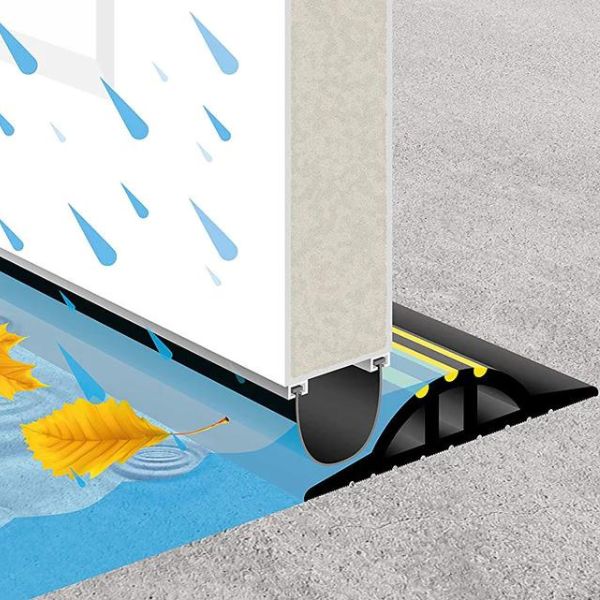Home » Garage Door Weatherstrip
garage door weather stripping
The cold weather season is in full effect.
This means holiday music, festive lighting, baking oddly shaped cookies with the little ones, and if your home is not properly insulated, this also means higher heating costs.
One of the most obvious sources of home energy loss is the door.
Installing a garage door weatherstripping on exterior doors will save energy and keep the home comfortable.

Energy Loss through the Door

Exterior doors are constantly being opened and closed (especially during the holiday season), contributing to energy loss.
Because of improper insulation, energy loss occurs even when the door is closed.
The heat loss often causes tampering of the heating system, further contributing to residential energy use.
A door weatherstrip seals the gap between the door and threshold to stop the unwanted infiltration/departing of air.
Get your garage door fixed today!
Choosing the Right Door Weatherstrip
The type you choose depends largely on flooring and living space:
- Standard: Heavy-duty Garage Door weatherstrip that is ideal for doors that move across hardwood floors or tiles.
These door bottom sweeps have an aluminum carrier, and typically last for years.
Because of the longevity of this type of weatherstripping, it does not have to be replaced on a regular basis. - Automatic: Useful on doors crossing carpets and rugs. Seals the gaps when the door is closed, and will rise to pass over a carpet or rug.
- Exterior: Renters find this type to be best, as it does not require actual installation on a door.
Exterior Garage door weatherstrip consists of foam tubes and sleeves to fit them in.
This slides gently over the floor whenever the door is opened, and the sleeves are machine washable. - Self-Stick: Place this in a room where heat does not circulate as well as it does throughout the rest of the house, such as a basement or door leading to the garage.
Installing a garage door weatherstrip (DIY)
The method of installation for door weatherstripping depends on the type you have chosen.
However, there are a few general rules that should be applied when putting in a door weatherstrip:
- Ensure the installation surface is clean, dry, and in a temperature that is higher than 20°F, -7° C.
- Double check the measurements for the designated installation area twice before cutting any weatherstripping.
- Fit the door weatherstripping snugly onto the door so that when the door closes the material squeezes together.
Placing a garage door weatherstripping around the exterior doors of your home allows you to block not only drafts, but insects from entering the home.
At the same time, the door weatherstrip keeps that nice warm air in the home during winter, and the cool air in during summer.
Remember that 11 percent of energy loss that occurs through doors? Once the doors have been properly insulated, this percentage will decrease.
The reduction in energy loss easily translates to a reduction in the amount of money spent on energy bills.
Maybe this year you can give yourself the gift of a smaller energy bill and a more comfortable home.
Garage Door weather stripping FAQ's
The lifespan of weather stripping can vary depending on factors such as usage, weather conditions, and the quality of the material. However, on average, weather stripping should be replaced every 3 to 5 years or whenever signs of wear, cracking, or damage are visible. Regular inspection is essential to ensure that the weather stripping is in good condition and providing an effective seal.
Yes, there are different types of weather stripping available for garage doors. The most common types include:
- Bottom seal: Installed on the bottom edge of the garage door to create a seal against the floor.
- Side weather stripping: Applied along the vertical tracks and jamb on the sides of the door.
- Top weather stripping: Placed on the top section of the door to seal against the header.
- Threshold seal: Used on the garage floor to create a seal between the floor and the bottom of the door.
Yes, properly installed weather stripping can significantly improve the energy efficiency of your garage. It helps to minimize air leakage, preventing heat loss during colder months and reducing heat gain in warmer months. This can lead to energy savings and a more comfortable environment inside the garage.
